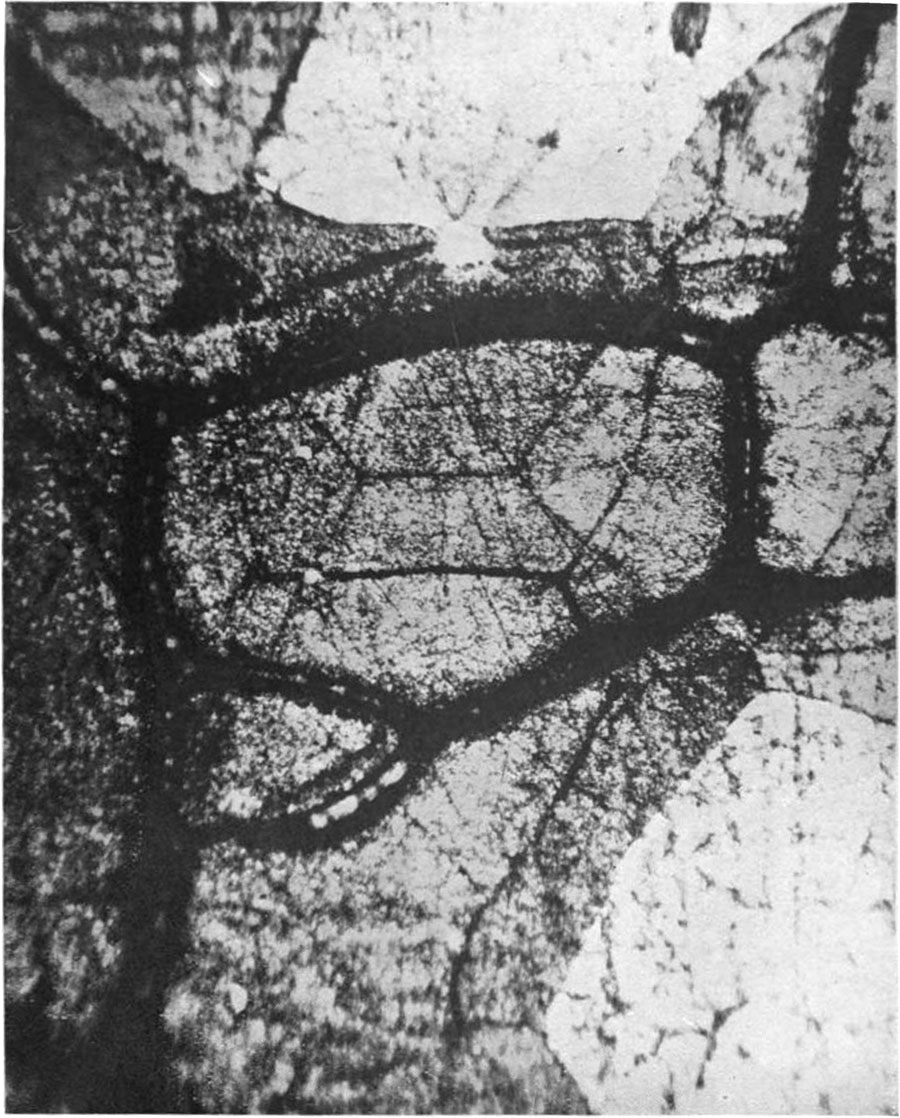altar, hearth, place of fire

*
Plate 32, Fig. 16. Zinc Alloy containing 1.5% Copper quenched in the γ range. x150.
(loosely cropped, straightened)
Kathleen E. Bingham. “The Allotropy of Zinc.” The Journal of the Institute of Metals 24:2 (1920) : 333-353, communications (including author’s reply) 354-360
Stanford copy, no date of digitization
— from Greek ἄλλος, meaning “other,” and τρόπος, meaning “manner, form”... the property of some chemical elements to exist in two or more different forms, in the same physical state, known as allotropes of these elements. (wikipedia)
Bingham concludes that zinc exists in three allotropic forms, associated with temperature.
—
Two Kathleen E. Bingham’s are recorded, born in 1875 and 1886, respectively (the latter dying in 1965). All that I have found under that name are several papers authored or co-authored in The Journal of the Institute of Metals and elsewhere, including “The Constitution of the Alloys of Aluminium, Copper, and Zinc Containing High Percentages of Zinc” (with John L. Haughton) in The Proceedings of the Royal Society of London (April 6, 1921), here.
In the last of these to be found — a review of the Annual Exhibition of the Physical and Optical Societies at the Imperial College of Science and Technology, London, in Nature (January 19, 1929): 110-111 — Bingham covers a range of various technical and scientific exhibits, and lectures, with striking clarity and economy. I learn from her account of Conrad Beck’s discourse on lenses that the word focus is from a word meaning altar or place of fire —
The focus of the ancients was a finite spot and not a point,
she observes.
tags: ἄλλος; τρόπος; focus; Kathleen E. Bingham, “The Allotropy of Zinc” (1920)